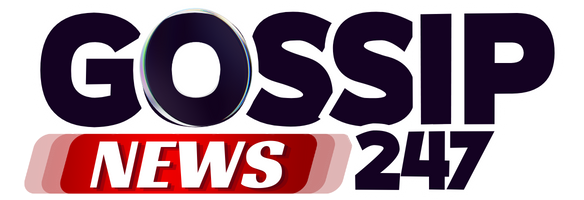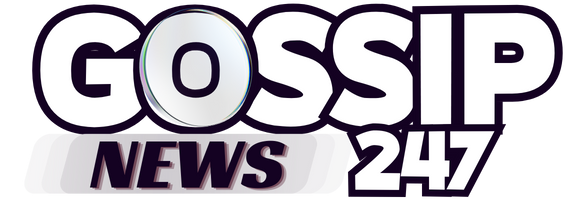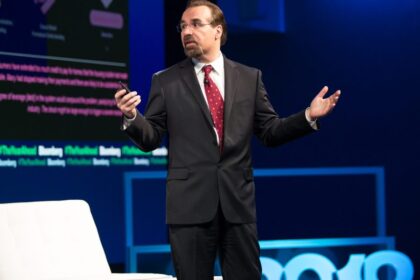
All seven patients treated with BEAM-101 achieved hemoglobin F (HbF) induction > 60% and hemoglobin S (HbS) reduction at
Initial safety profile consistent with busulfan conditioning and autologous hematopoietic stem cell transplantation
All seven patients received the treatment achieved Target (NYSE:) Cell dose with one or two rounds of mobilization and experienced rapid neutrophil and platelet engraftment
Hemolysis markers normalized or improved in all patients
Beam will host an investor event on December 8, 2024, at 8 p.m. PT
SAN DIEGO, December 7, 2024 (GLOBE NEWSWIRE) — Beam Therapeutics Inc. (Nasdaq: BEAM), a biotechnology company developing precision genetic medicines through base editing, today announced new data on the safety and efficacy of its BEACON phase 1/2 clinical trial. trial of BEAM-101 in sickle cell disease (SCD) patients with severe vaso-occlusive crises (VOC). The data was featured today in the press program at the 66th Annual Meeting and Exhibition of the American Society of Hematology (ASH) in San Diego and will be presented in an oral session on Sunday, December 8, 2024 at 10 a.m. PT .
Consistent with data previously announced by Beam, updated data from seven patients treated with investigational base-editing therapy BEAM-101 demonstrated robust and durable increases in fetal hemoglobin (HbF) and reductions in sickle cell hemoglobin (HbS), rapid neutrophil and platelet engraftment, and normalization or improved markers of hemolysis. No VOCs were reported post-transplant. A summary of the results of the current clinical study is provided below.
These early data from the BEACON trial are very encouraging and highlight the potential for BEAM-101 to provide significant clinical benefit to patients with severe sickle cell disease, said Matthew M. Heeney, MD, associate chief of Hematology. at Dana-Farber/Boston Children’s. Center for Cancer and Blood Disorders. Data from the first seven patients demonstrate the ability of BEAM-101 to significantly alter the hemoglobin profile to express a majority of protective fetal hemoglobin. All patients mobilized effectively and had rapid engraftment with a low number of neutropenic days. I look forward to the continued maturation of data to better understand the long-term benefits of BEAM-101 for people with sickle cell disease.
It is an honor to share initial results from BEACON with the hematology community at the ASH Annual Meeting, where there is widespread recognition of the significant burden that sickle cell disease imposes on patients and their families, said John Evans, Chairman and CEO of Beam. We believe these early data for BEAM-101 demonstrate the potential of our base-editing technology to provide a differentiated option for sickle cell patients, having demonstrated a robust increase in fetal hemoglobin of >60%, a decrease in hemoglobin S to
To date, more than 35 patients have passed screening and been enrolled in the BEACON Phase 1/2 clinical trial, and of these, 11 patients have received one dose of BEAM-101. As of October 28, 2024, the data cutoff, a total of seven patients with severe sickle cell disease were treated with BEAM-101 and included in the safety and efficacy analysis with follow-up ranging from 1 to 11 months.
The main highlights are:
- Rapid and sustained increases in protective fetal hemoglobin (HbF): All patients achieved endogenous HbF levels above 60% and corresponding sickle cell hemoglobin (HbS) reduction below 40%, which was durable. A pancellular distribution of HbF was observed after removal of the transfused blood.
- Robust and durable Total (EPA:) Hemoglobin (Hb) Levels: Total hemoglobin levels increased rapidly with resolution of anemia in patients after removal of transfused blood.
- Efficient cell collection and rapid engraftment: All patients reached the minimum dose of target cells within 1 or 2 mobilization cycles (mean: 1.4). The mean time to neutrophil engraftment was 17.1 days (range: 15-21), with a low mean duration of neutropenia (6.3 days). The average time to platelet engraftment was 19.1 days (range: 11-34).
- Normalization of hemolysis markers: Key markers of hemolysis, including indirect bilirubin, haptoglobin, lactate dehydrogenase, and reticulocytes, normalized or improved in all patients after BEAM-101 treatment.
- Consistent Safety Profile for Busulfan and Autologous Hematopoietic Stem Cell Transplantation (HSCT): The safety profile of BEAM-101 was consistent with busulfan conditioning and autologous HSCT. The most common treatment-emergent adverse events (TEAEs) were consistent with busulfan conditioning, including febrile neutropenia, stomatitis, and anemia. One patient died four months after BEAM-101 infusion due to respiratory failure that was determined by the investigator to be likely related to busulfan conditioning and deemed unrelated to BEAM-101. No VOCs were reported post-transplant.
ASH Investor Event Information
Beam will host a live and web-based investor event on December 8, 2024 at 8:00 p.m. PT in San Diego to review key presentations from this year's ASH meeting. The event will be webcast live and accessible under Events & Presentations in the Investors section of the Company's website at www.beamtx.com. The archived webcast will be available on the company's website approximately two hours after the event.
About BEAM-101
BEAM-101 is an investigational genetically engineered cell therapy for the treatment of severe sickle cell disease (SCD). The unique treatment consists of autologous CD34+ hematopoietic stem and progenitor cells (HSPCs) that have been base modified in the promoter regions of the HBG1/2 genes and are administered via a hematopoietic stem cell transplantation procedure. BEAM-101 editing is designed to prevent the transcriptional repressor BCL11A from binding to the promoter without disrupting BCL11A expression, leading to increased production of non-sickling and anti-sickling fetal hemoglobin (HbF) and thus mimicking the effects natural variants observed. in hereditary persistence of fetal hemoglobin. HbF is the predominant hemoglobin variant during development and early life. The safety and effectiveness of BEAM-101 are being evaluated in the ongoing Phase 1/2 BEACON study, a single-arm, open-label, multicenter trial in adult sickle cell patients with severe vaso-occlusive crises (VOC).
About Beam Therapeutics
Beam Therapeutics (Nasdaq: BEAM) is a biotechnology company committed to establishing the leading, fully integrated platform for precision genetic medicines. To realize this vision, Beam assembled a platform with integrated gene editing, delivery and in-house manufacturing capabilities. Beam's suite of gene editing technologies leverage base editing, a proprietary technology designed to enable precise, predictable and efficient single base edits to targeted genomic sequences without causing double-strand breaks in DNA. This has the potential to enable a wide range of potential therapeutic editing strategies that Beam uses to advance a diverse portfolio of core editing programs. Beam is a values-driven organization, committed to its people, cutting-edge science, and a vision of providing lifelong cures to patients suffering from serious illnesses.
Caution Regarding Forward-Looking Statements
This press release contains forward-looking statements within the meaning of the Private Securities Litigation Reform Act of 1995. Investors are cautioned not to place undue reliance on any forward-looking statements, including, but not limited to, statements relating to therapeutic applications. and the potential of our technology, including with respect to SCD; our plans and expected timeline for advancing our programs; clinical trial designs and expectations for BEAM-101 and ESCAPE; our presentations at the ASH Annual Meeting; and our ability to develop precision, curative, lifelong genetic medicines for patients through core editing. Each forward-looking statement is subject to important risks and uncertainties that could cause actual results to differ materially from those expressed or implied in such statement, including, without limitation, risks and uncertainties relating to: our ability to develop, obtain regulatory approval for, and commercialize our product candidates, which may take longer or cost more than anticipated; our ability to raise additional funds, which may not be available; our ability to obtain, maintain and enforce patents and other intellectual property protections for our product candidates; uncertainty as to whether our product candidates will receive the necessary regulatory approval to initiate human clinical trials; that preclinical testing of our product candidates and preliminary or interim data from preclinical studies and clinical trials may not predict the results or success of current or subsequent clinical trials; that the initiation and recruitment of our clinical trials, as well as the anticipated timeline for their progression, may take longer than expected; that our product candidates or the delivery arrangements we rely on to administer them may cause serious adverse events; that our product candidates may experience manufacturing or supply interruptions or failures; risks linked to competing products; and other risks and uncertainties identified under the headings Summary of Risk Factors and Risk Factors in our Annual Report on Form 10-K for the fiscal year ended December 31, 2023, our Quarterly Reports on Form 10-Q for the quarterly period closed September 30, 2023. 2024 and in any subsequent filings with the Securities and Exchange Commission. These forward-looking statements speak only as of the date of this press release. Factors or events that could cause our actual results to vary may emerge from time to time, and it is not possible for us to predict all of them. We undertake no obligation to update any forward-looking statement, whether as a result of new information, future developments or otherwise, except as required by applicable law.
Contacts:
Investors:
Holly Manning
Beam therapy
hmanning@beamtx.com
Media:
Dan Budwick
1AB
dan@1abmedia.com
#Beam #Therapeutics #Announces #Data #BEACON #Phase #Clinical #Trial #BEAM101 #Sickle #Cell #Disease #American #Society #Hematology #ASH #Annual #Meeting
,












